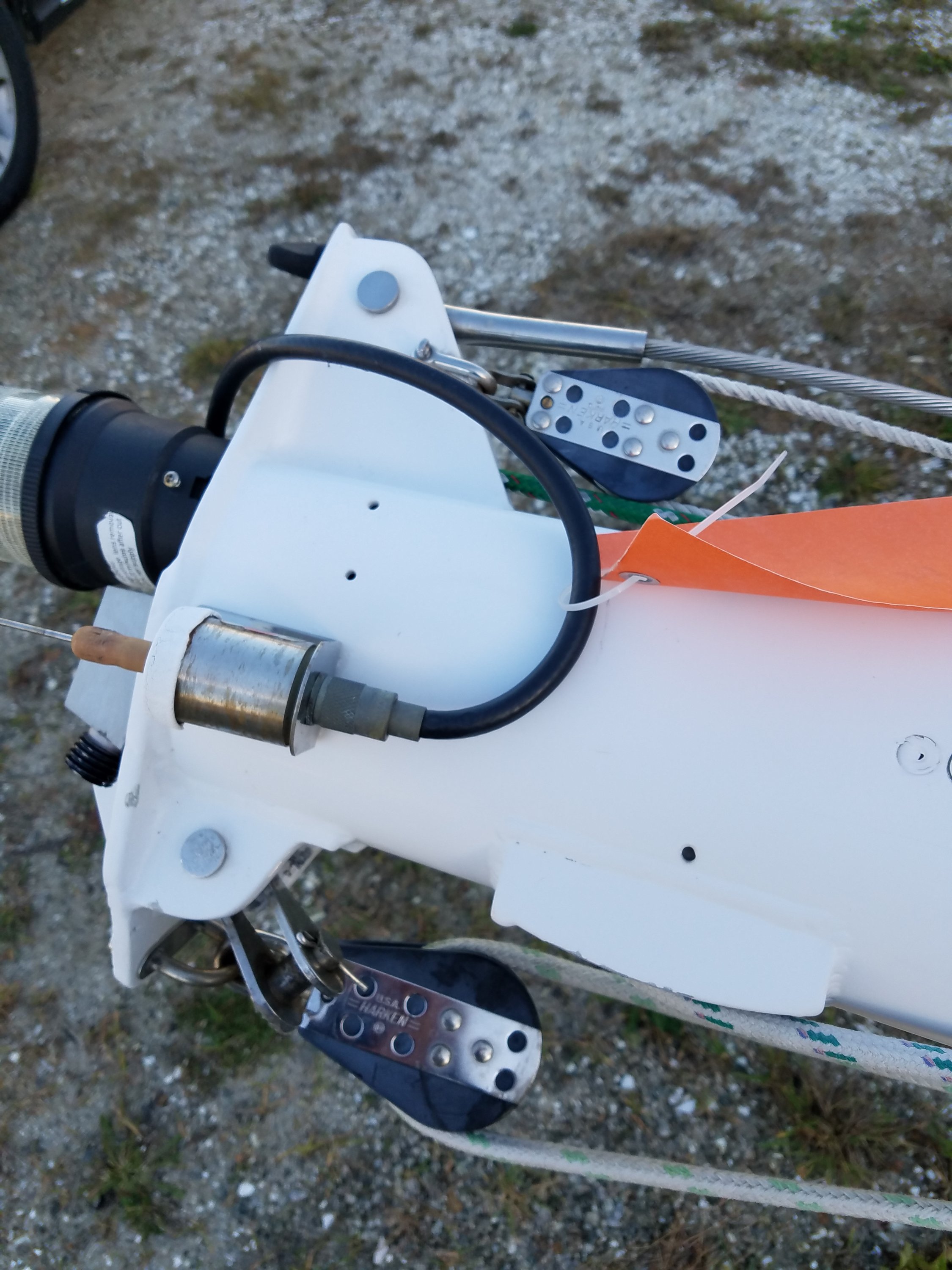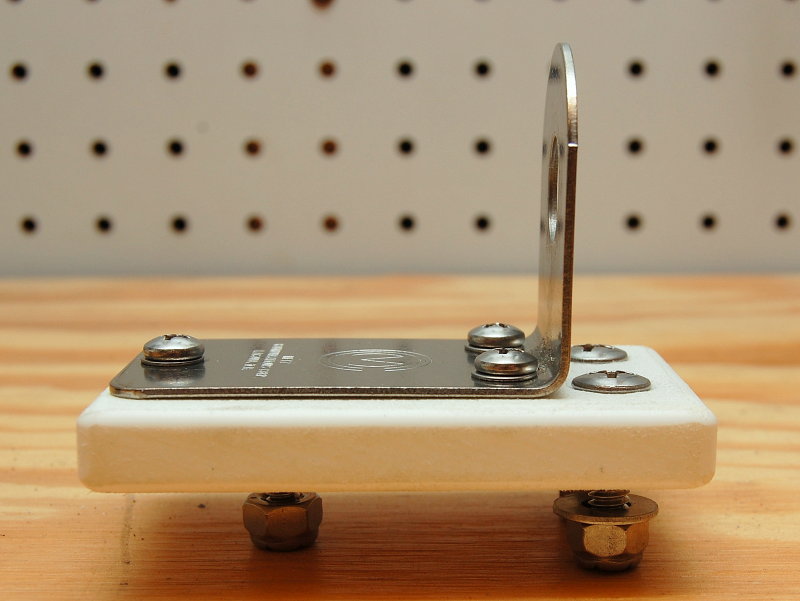Guys,
As always AC, DC, Lightning, SSB Radio and galvanic bonding/grounding are often very misunderstood. I will simply highlight some points Stan makes in hopes that it may "pop" and an ah-ha moment may happen...
DC Ground:
Every light or appliance should be wired with its own DC return wire. Never use the mast, engine, or other
metal object as part of the return circuit."
What this is very simply saying is that a bonding circuits green wires or the mast or any other part of the vessel should not be used to carry on-board DC current. I see this rule violated far too often and nearly every boat out there, with a VHF, is putting DC current through the spar. DC current won't just stick to the coax some will return down the spar and some through the coax unless you isolate it. This puts stray DC current right onto the lightning & galvanic bonding system on many boats. If I had a dime for every navigation light I saw use the spar as a DC current carrier I'd be retired by now. I also routinely see folks just run the DC black or yellow wire to any green wire they can find thinking this is ok. IT'S NOT..
Isolating the braid of your coax from the spar is not very difficult..
"AC Ground
The best solution is a heavy and expensive isolation transformer."
Bingo!! A galvanic isolator, what most boaters use, can only protect your boat against "galvanic level" (dissimilar metals voltage & current potentials) damage. It can not protect you from electrolytic or what is commonly called stray current corrosion. The term
electrolysis is what hirsuit women do to their upper lip.
An isolation transformer (properly installed) is the only good way, short of unplugging your boat, to keep you electrically isolated from other boats in the marina, but they are no inexpensive.
"The acceptable solution (for the rest of us) is to install a light and inexpensive Galvanic Isolator"
A galvanic isolator should be the absolute bare minimum if you plan to plug into a marina. Be sure to only install "Fail Safe" galvanic isolators that meet the ABYC standards.
It is also a good idea to use a Ground Fault Interrupter (GFI) in your AC wiring.
Not only is is a good idea, GFCI's for outlets are required in head, galley, weather decks and engine spaces under the APYC safety standards. Whenever GFCI receptacles can be used, they should be used. The ABYC standards set a
bare minimum, not a maximum. Not only are 5mA GFCI's required but also a 30mA ELCI is required as the vessels main breaker. These changes make boating much safer. I often prefer to go a step beyond the
minimum requirements and use GFCI's where ever I possibly can. This includes water heaters, air conditioners, reverse cycle heat, battery chargers etc. etc.[/B][/I]
Lightning Grounds
Connect a 4 AWG battery cable from the base of your aluminum mast to the nearest keel bolt fromexternal ballast. If you have internal ballast, you should install a lightning ground plate. One square foot is recommended for use in salt water; fresh water requires much more. Do not rely on a thru-hull or a sintered bronze radio ground (e.g. Dynaplate) for use as a lightning ground.
Lightning bonding is intended to
help minimize damage to the hull, that is it, that is all it does. If done well, it can certainly help to minimize hull damage. Lightning bonding is not, nor was it ever, intended to help you
avoid a strike or
protect your electrical equipment. I do lightning investigation & repair work and I have yet to see a single lightning system prevent a strike. In fact, I see "
fuzzy bottle brush boats" get struck more often rather than less often. I also see lightning bonded boats hit
slightly less than non-lightning bonded. I also see lighting bonded boats suffer less hull damage. All we can do is try to provide a low impedance path to Earth in order to help
minimize hull damage so you hopefully don't sink when thousands of tiny holes are blown in the hull as lightning takes a more difficult path, through you hull, to reach ground..
RF Ground
Your VHF doesn't need to use the ocean as a counterpoise, so here we are dealing only with the ground needed for your HF/SSB radio.
Seeing as most boat owners do not have an SSB I will let the article explain this, and it does so quite well. An easy and very inexpensive fix to isolate the VHF whip from the spar is shown above.
"Bonding and Electrolytic Corrosion Due to Hot Marinas
Do not bond any thru-hulls or other immersed metal that can be electrically isolated. Specifically, Figure 1. Conductors running from the external keel or ground plate to the mast, stays and to the metal fuel tank will protect against a lighting strike, and there will be no DC connections to the engine or to the electrical system. Keep your metal keel/ballast, your metal rudder shaft, your engine/prop, and all thru-hulls electrically isolated, from each other, and from the engine."
Another excellent statement.. If the resistance between your bonded underwater metals provides a lower resistance path for stray current your boats bonding circuit becomes a path for it. The current path will flow from one immersed bit of metal, through your vessels bonding wires, and exit the vessel again at anotehr point in the bonded circuit. It is this exit point that will suffer corrosion. By not providing a path for stray current it will not use your boat. Bonding underwater metals only serves to slow the rate of DC corrosion, which almost always originates on-board an owners vessel, even when they are vociferously claiming
"I know it's the new guy at the end of the dock causing my rapid anode erosion." It rarely ever is and almost always originates on the owners boat.
"Keep your metal keel/ballast electrically isolated from all other bits of metal. If you have the misfortune to have an external iron or steel keel, however, mount a zinc directly on it to reduce the rate of corrosion. Leave lead keels/ballast isolated."
If you don't have an SSB isolating the keel or external lightning bonding plate is easy to do and it will yield a boat that is less likely to suffer from hull damage in a strike. If you have an SSB read the points in Stan's article. Just be certain you mast is de-coupled from the rest of the vessel DC system electrically, including nav lights and your VHF whip.





